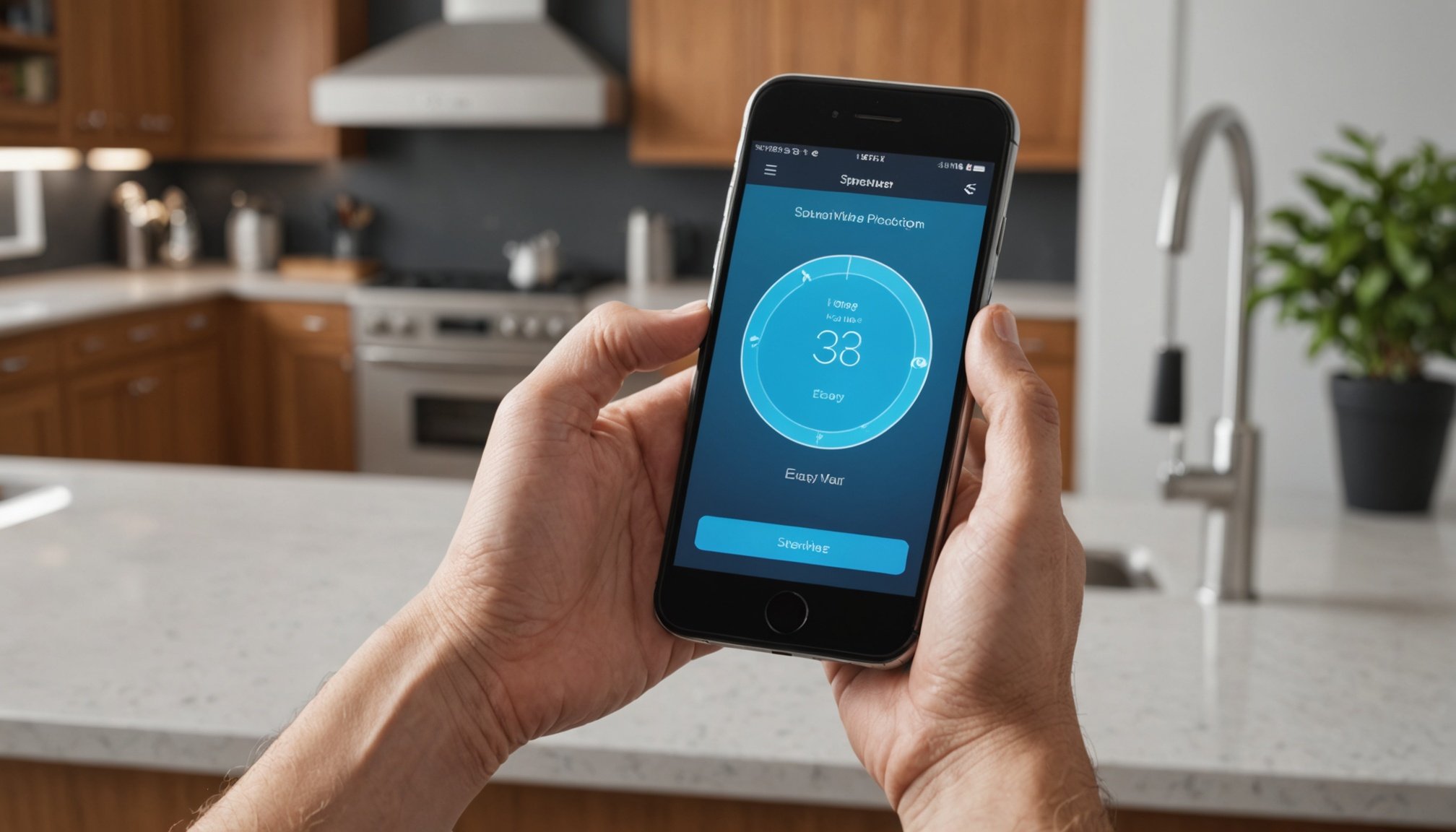Introduction to Water Leak Detection Systems
Understanding how water leak detection systems operate can transform the way you protect your home from potential water damage. These systems are essential as they help identify leaks early, preventing costly repairs and extensive property damage. Water leaks can arise from various sources such as broken pipes, faulty appliances, or even severe weather conditions, posing significant risks.
Integrating technology with water leak detection not only enhances efficiency but also provides real-time alerts. Smartphone-enabled systems elevate the functionality of these detectors, allowing homeowners to receive instant notifications whenever a leak is detected. This immediacy is critical in preventing escalation.
Moreover, modern systems often feature advanced capabilities like automatic shut-off valves in some models, which can turn off the water supply when a leak is detected. This automation greatly reduces the risk of significant water waste and damage. As technology continues to evolve, water leak detection systems have become more sophisticated, offering homeowners increased peace of mind and protection for their investments.
Selecting the Right Water Leak Detection System
Choosing a water leak detection system requires careful consideration of several key features. Prioritise systems with automatic shut-off valves and real-time alert capabilities, vital for immediate response. Assess the coverage area; some devices are more suited for larger homes, while others excel in smaller spaces.
This might interest you : Master Your Smart Home Irrigation: The Essential Smartphone Handbook for Complete Control
When comparing popular brands, consider Honeywell, Flo by Moen, and LeakSmart. Honeywell offers reliable compatibility with smart home systems. Flo by Moen stands out with its detailed water usage analysis, and LeakSmart provides robust auto shut-off features. It’s wise to gauge product comparisons based on these unique attributes to align with your specific needs.
Budget is another crucial factor. While entry-level systems provide basic detection at economical prices, premium models deliver advanced analytics and smart integrations, proving valuable over time. Evaluate how device features, such as ease of installation and brand reputation, match the extra cost.
Balance your home protection needs, device features, and budget to select the right detection system. This investment helps safeguard your home against potential water damage, ensuring a safer environment.
Step-by-Step Guide to Installing Your Water Leak Detection System
Installing a water leak detection system is a manageable task with the right preparation. Start by gathering necessary tools such as a drill, screwdriver, and measuring tape. Ensure your installation area is free from obstructions and has a stable surface for attachment.
To begin the DIY installation, position the water leak sensors in high-risk areas like under sinks or near appliances. Ensure each sensor is within the wireless range of the main unit. Use adhesive strips or screws for a secure fit.
Next, connect your system to a power source, following the manufacturer’s instructions. Most systems offer easy plug-and-play setups, making this process straightforward.
When positioning, a common pitfall is placing sensors where daily activities can dislodge them. Avoid high-traffic areas and ensure sensors aren’t covered by items that may obstruct detection.
Perform a test run to confirm your setup is working correctly. Trigger a simulated leak to ensure alerts are active. This step validates your water leak detection system is operational, safeguarding your home effectively. Remember, thorough preparation and evaluation prevent potential errors, maximizing home protection.
Configuring Smartphone Notifications and Settings
Modern smartphone configuration is crucial for optimising water leak detection systems. Begin by downloading the necessary app associated with your device. Follow the setup prompts to pair your smartphone with the system, ensuring a seamless connection.
Once set up, configuring alert settings becomes a priority for home protection. Customise notifications to be immediate and noticeable. Options may include text messages, emails, or push notifications, depending on your system. Be sure to test these alerts to confirm they function correctly in case of a leak.
Integrating the system with smart home platforms like Amazon Alexa or Google Home adds another layer of convenience. This allows users to receive alert settings through voice commands or additional connected devices, enhancing overall system functionality.
Also, explore advanced app usage features such as water usage tracking and historical alert logs. These tools not only assist in early detection of potential issues but also promote efficient water usage. By regularly updating app settings and software, homeowners can ensure their smartphone-enabled systems remain up-to-date and provide the best possible protection against water damage.
Benefits of Regular Maintenance and Monitoring
Regular system maintenance is vital for ensuring your water leak detection system functions reliably. Periodic checks help identify subtle issues before they escalate, maintaining optimal performance. By regularly inspecting sensors and connections, you can prevent unexpected failures and safeguard against potential water damage.
Periodic checks are crucial in adjusting system sensitivity, particularly for sensors that may need recalibration. This can optimise water leak prevention, allowing earlier detection of minor leaks. Consider reviewing the sensor’s placement and replacing batteries if necessary, as these small adjustments can make a significant difference.
Troubleshooting is a key part of maintenance, addressing common issues like sensor misplacement or connectivity problems. For instance, ensure sensors are not obstructed by objects that could impede detection. If the system doesn’t notify you promptly, verify network connectivity or update the associated app.
Routine monitoring also involves software updates to keep device features current and effective. These updates often introduce new capabilities and improve existing functionality, enhancing overall system resilience. Ensuring your system undergoes regular checks and updates promotes long-term efficiency and effective home protection.
Troubleshooting Common Issues
Inevitably, any water leak detection system might encounter issues. Let’s address some common sensor issues and propose solutions to streamline problem resolution.
Faulty alerts often stem from initial troubleshooting leaks within your system. Verify sensor placement; ensure it’s not obstructed by objects that might interfere with detection. In this case, repositioning can restore operational accuracy, reducing incorrect alarms.
Networking troubles can occur with smartphone-enabled systems, affecting alert reception. Check your Wi-Fi connectivity and ensure the system’s app is up-to-date. Often, reconnecting the device or restarting the router solves such disruptions.
If sensor issues persist, consider checking the sensors’ batteries or connections. Loose fittings can lead to malfunction, disrupting leak detection. Tightening connections or replacing batteries often resolves this issue.
In cases where problem resolution proves elusive, contacting customer support might be necessary. Professional services provide advanced troubleshooting or repairs when simple fixes don’t suffice. Remember, effective issue resolution ensures your system’s reliability, thus maintaining home protection.
Conclusion and Final Thoughts
Investing in water leak detection systems is crucial for homeowners aiming to enhance their home protection. These systems not only avert potential water damage but also conserve water through timely detection of leaks. By leveraging smartphone-enabled systems, users gain instant alerts, providing a technological edge in managing home safety.
Recapping the key features—such as automatic shut-off valves and real-time notifications—illustrates the need for thorough device features consideration. Systems like Honeywell, Flo by Moen, and LeakSmart offer varied capabilities, demonstrating the importance of product comparisons tailored to individual preferences and budgets.
Emphasising regular maintenance and monitoring ensures optimised water leak prevention. By conducting periodic checks, homeowners can sustain system efficacy, reducing the risk of undetected leaks that could escalate into substantial damage. Troubleshooting potential sensor issues and maintaining current software versions are integral to a robust defence.
Ultimately, selecting and maintaining the right system empowers homeowners to proactively safeguard their environment. Consider your specific home protection needs and act to fortify your residence against water leaks effectively. This investment is not just a measure of caution—it is a step towards ensuring a secure and worry-free home environment.











